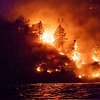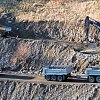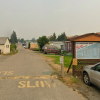The world is rightfully preoccupied with COVID-19 right now, but in the BC Interior, we can’t forget that flood and fire season is right around the corner.
Currently, the snowpacks around the Okanagan region are all higher than normal for this time of year, which Penticton Dam manager Shaun Reimer says brings an “elevated flood risk.”

However, he’s also quick to point out that an elevated flood risk in March doesn’t necessarily mean that we’re going to see floods in April, May and June like we did in 2017.
With the knowledge he has regarding the snowpacks’ current status, and more up to date numbers coming later this week, Reimer has the ability to make adjustments as he sees fit.
The current high inflow forecast tells him he wants to use the Penticton Dam to lower Okanagan Lake current levels, allowing room for that inflow as they wait for further modelling and predictions.
Targets will be set for the lake each month based on this modelling and as much weather data as they gather, but as NowMedia Wesla English always tells us, it’s hard to trust a long-term forecast.
That’s especially true for precipitation forecasts, which can be very important in this regard, but Reimer says you can have a bit more confidence in the long-term outlook on temperature.

“Environment Canada has suggested that springtime is likely to be a little cooler than normal,” he told NowMedia, adding that that could be good or bad.
“It’s potentially bad because the longer we leave the snow in the hills, the higher the probability is that we’re going to get an extended warmth streak, say in May.”
If that happens, it can combine with the fact that May and June are typically the Okanagan’s wettest months, to produce a bad combination of rapid snowmelt and added precipitation.
However, if the snow stays in the hills longer, it allows Reimer to draw the lake down and make more room for the water that is going to be coming in, as he’s begun to do now.
To make a long story short, a cool spring and later snowmelt is worrisome when it comes to tributaries flooding, but good news when it comes to potential flooding in Okanagan Lake.
In 2017, the Thompson-Okanagan had some of the lowest snowpack numbers we’ve seen in the past decade.
However, as well as saw, a large amount of springtime precipitation and a blast of May heat resulted in devastating flooding that basically wiped out the Okanagan’s entire summer.
So Reimer will have to play it by ear, taking each bit of data they receive throughout the spring into mind as they make crucial decisions regarding the Penticton Dam.
NowMedia will speak with Reimer periodically over the course of the spring and get updates on how the Okanagan’s flooding situation looks.
We will also begin our yearly Lake Level tracker story in about a month’s time.


















